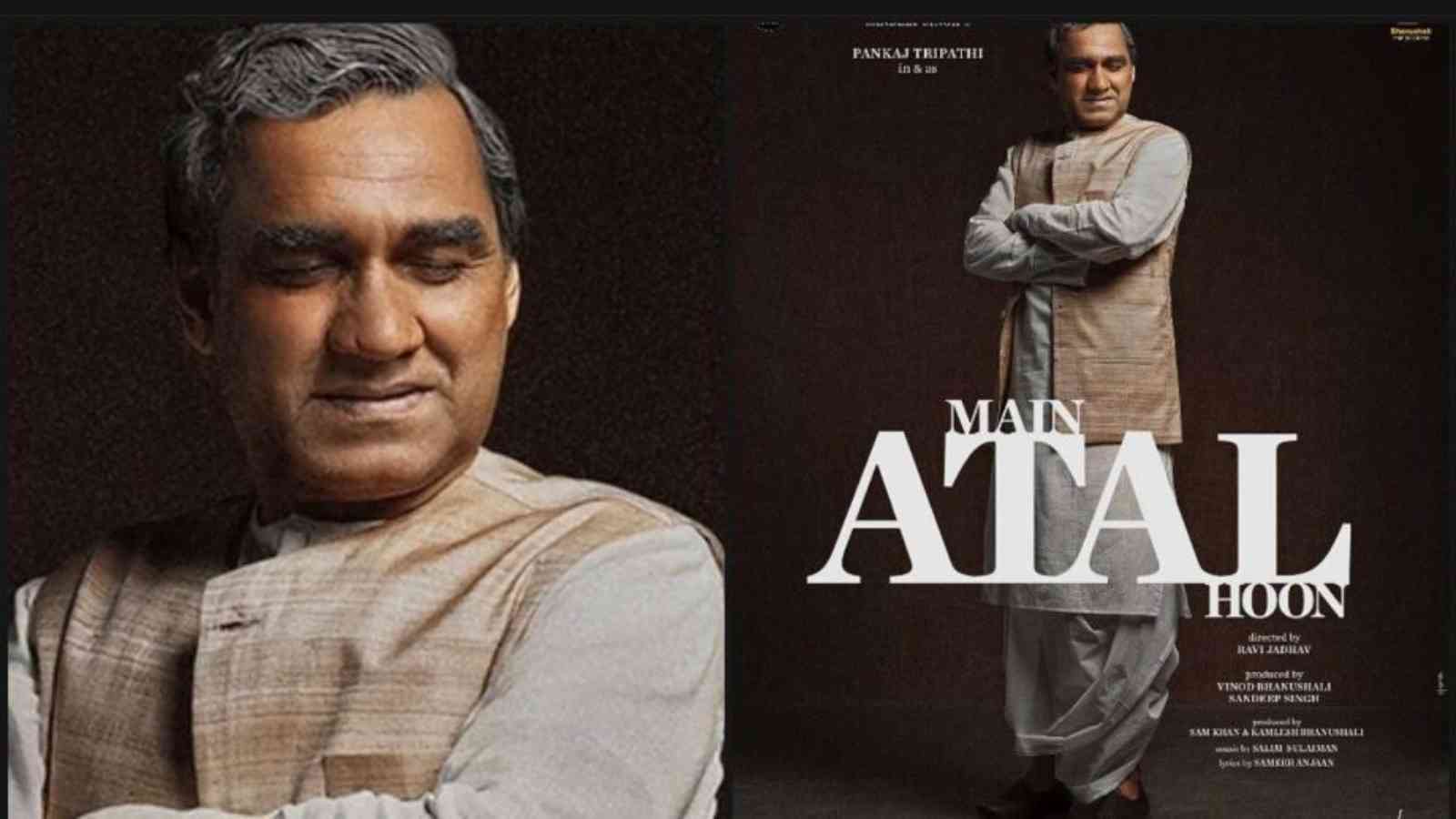“Main Atal Hoon: Pankaj Tripathi Embarks on a Cinematic Journey into the Life of Atal Bihari Vajpayee”
Introduction:
In the world of biographical cinema, the announcement of “Main Atal Hoon” has sparked widespread interest and excitement. This upcoming film, directed by the extremely talented Pankaj Tripathi, promises to be a moving examination of the life and legacy of one of India’s most revered political figures, former Prime Minister Atal Bihari Vajpayee. As fans eagerly await the release of this biopic, we discuss its significance, the challenges it may face, and the potential impact it could have on how political leaders are portrayed on film.
Atal Bihari Vajpayee, A Statesman Beyond Politics:
Atal Bihari Vajpayee, a charismatic leader and statesman, made an indelible mark on Indian politics and society. Vajpayee’s life story as a poet, orator, and visionary leader is a compelling one that takes him through India’s post-independence political landscape. His tenure as Prime Minister, which included key policy initiatives and a steadfast commitment to inclusive governance, cemented his place in the hearts of many Indians. “Main Atal Hoon” aims to peel back the layers of this complex personality, revealing the man behind the political icon.
Pankaj Tripathi’s portrayal of Atal Bihari Vajpayee highlights his versatility and prowess as an actor. Tripathi, known for his transformative performances in films such as “Newton,” “Stree,” and the web series “Mirzapur,” has repeatedly demonstrated his ability to bring diverse characters to life. Portraying a political figure like Vajpayee necessitates not only skill, but also a thorough understanding of the nuances that define the man. Tripathi’s dedication to his craft suggests that audiences can anticipate a portrayal that goes beyond mimicry, attempting to capture the essence of Vajpayee’s persona.
The Challenge of Representing Political Icons:
Biopics about political figures frequently walk a fine line between historical accuracy and cinematic storytelling. “Main Atal Hoon” faces the challenge of presenting an unbiased and authentic account of Vajpayee’s life while avoiding hagiography or political agendas. Striking this balance is critical to ensuring that the film appeals to audiences from all political perspectives while also paying honest and respectful homage to Vajpayee’s legacy.
Navigating Political Sensitivities:
Due to the political nature of the subject matter, filmmakers must navigate the complex web of political sensitivities. Portraying a leader who was involved in a number of contentious events and policy decisions necessitates a careful and subtle approach. While the film is expected to highlight Vajpayee’s accomplishments, it should also be prepared to address the challenges and criticisms that characterized his tenure. Balancing the narrative to provide a comprehensive view of Vajpayee’s legacy is critical to the film’s success.
“Main Atal Hoon” explores the lesser-known aspects of Atal Bihari Vajpayee’s life. While the general public is aware of his role as a statesman, poet, and orator, aspects of his personal life, struggles, and decision-making processes are likely to remain unknown. At its best, biographical cinema has the ability to humanize political figures, giving viewers a more intimate understanding of their journey. The film promises to delve into the depths of Vajpayee’s character, revealing the man behind the political figurehead.
“Main Atal Hoon” has the potential to take viewers on a visual journey through history. The film’s production design, cinematography, and attention to historical detail are essential for recreating the political landscapes that defined Vajpayee’s era. A visually immersive experience can enhance storytelling by allowing audiences to feel the pulse of the times and witness key historical events unfold on the big screen.
Impact on Political Biopics:
The success and reception of “Main Atal Hoon” may influence how political figures are portrayed in Indian cinema. If handled well, the film has the potential to set a standard for future political biopics, encouraging filmmakers to approach leaders’ lives with authenticity, responsibility, and a commitment to historical accuracy. Mistakes, on the other hand, may spark debates about the ethical responsibilities that come with portraying public figures on screen.
Conclusion:
“Main Atal Hoon” is on the verge of making cinematic history, promising audiences a riveting portrayal of Atal Bihari Vajpayee‘s life. With Pankaj Tripathi at the helm, the film promises to be a compelling story that delves deeper into the complexities of a statesman’s journey. As the release date approaches, the film becomes more than just a biopic, but a cinematic journey into the heart of India’s political history, inviting audiences to reflect on the legacy of a leader who, in his own words, may have been the “atal” (unshakeable) force that shaped a nation’s destiny.
click here to embark on a thrilling journey of fun and excitement at funexpresshub.com
